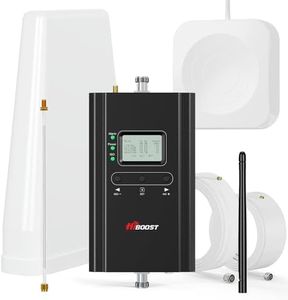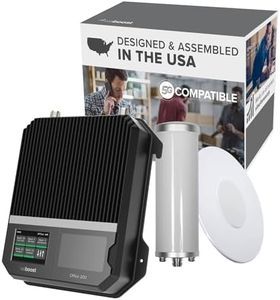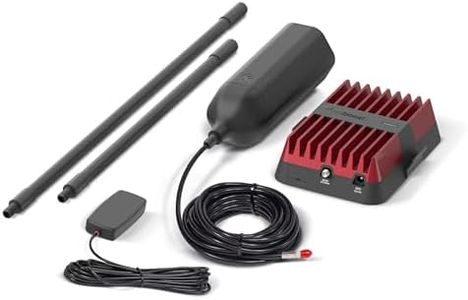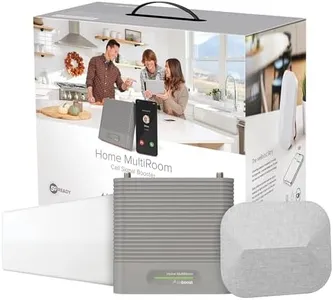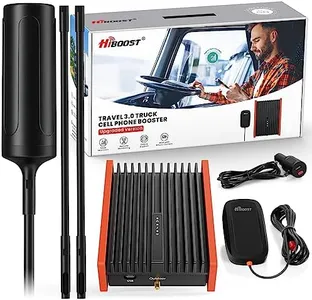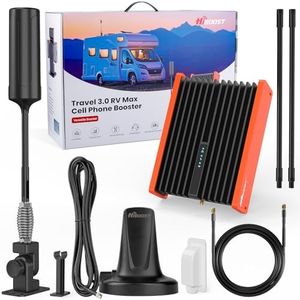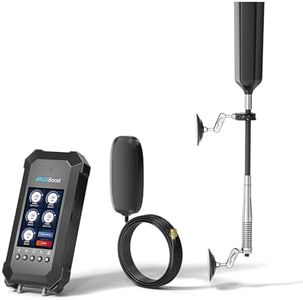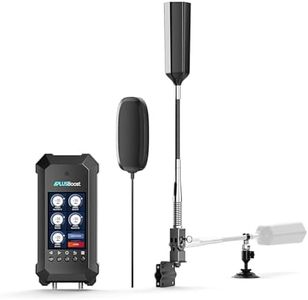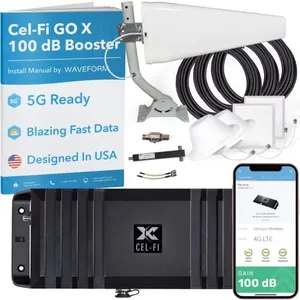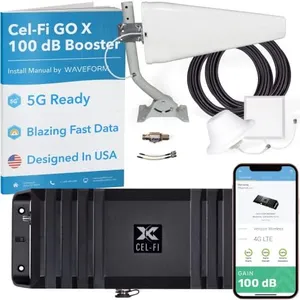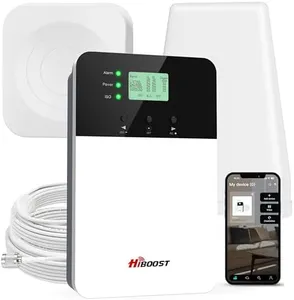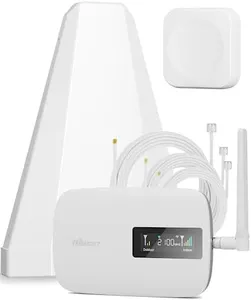10 Best Reception Boosters 2025 in the United States
Our technology thoroughly searches through the online shopping world, reviewing hundreds of sites. We then process and analyze this information, updating in real-time to bring you the latest top-rated products. This way, you always get the best and most current options available.

Our Top Picks
Winner
weBoost for Business Office 200 (50 Ohm) Cell Phone Signal Booster | 5G/4G LTE | All U.S Carriers - Verizon, AT&T, T-Mobile & More | Up to 10,000 sq ft | FCC Approved
Most important from
11 reviews
The weBoost Office 200 is a robust cell signal booster designed for business environments, covering up to 10,000 square feet. This makes it an excellent choice for medium to large offices that struggle with poor cell reception. It supports both 4G LTE and 5G, ensuring compatibility with all major US carriers and future-proofing your investment.
One of its standout features is the professional installation, which takes the guesswork out of setup and ensures optimal performance. However, this also means that the installation is not a DIY project and requires scheduling and possibly additional costs. The device is FCC-approved and automatically adjusts to varying signal conditions, delivering reliable performance despite weather changes or building materials that typically block signals.
The booster is also crafted in the USA and backed by weBoost's customer support, which is a plus for those who value local manufacturing and reliable service. On the downside, the product is relatively heavy at 21.9 pounds and may require a substantial space for installation, given its dimensions of 19 x 13 x 13 inches.
Most important from
11 reviews
weBoost Drive Reach OTR - Cell Phone Signal Booster for Trucks and SUVs | Boosts 5G & 4G LTE for All U.S. Carriers - Verizon, AT&T, T-Mobile & more | Made in the U.S. | FCC Approved (model 477154)
Most important from
2212 reviews
The weBoost Drive Reach OTR Cell Phone Signal Booster is designed specifically for trucks and SUVs, making it ideal for those who frequently travel in areas with poor cell coverage. It works with all major U.S. carriers, including Verizon, AT&T, and T-Mobile, and supports both 5G and 4G LTE, ensuring compatibility with the latest technology. The booster boasts a high gain trucker antenna and a maximum gain of 50 dB, which helps in reaching distant cell towers and boosting signals for multiple devices simultaneously.
This booster can be particularly beneficial for long-haul truckers or those driving through rural areas. Additionally, the product includes a variety of mounting and extension options, making it adaptable to different vehicle setups. The installation, however, may be somewhat complex due to the number of components and the need for proper placement of antennas and cables. The unit is FCC approved and comes with a two-year warranty, backed by U.S.-based customer support.
Despite its lightweight design, the numerous components might require careful handling during setup. The weBoost Drive Reach OTR is a robust solution for those needing reliable cell signal enhancement on the road, especially in remote areas.
Most important from
2212 reviews
Hiboost Cell Phone Signal Booster for Home and Office, 4,000 sq ft, Boost 5G 4G LTE Data for Verizon AT&T and All U.S. Carriers, FCC Approved
Most important from
2051 reviews
The HiBoost Cell Phone Signal Booster is designed to improve weak cell signals in homes and offices, covering up to 4,000 sq ft, which is enough for 2-3 rooms. It works with all major US and Canadian carriers and supports multiple frequency bands including those used for 2G, 3G, 4G LTE, and some 5G bands, making it a versatile choice if you switch carriers or upgrade phones. The booster uses a high-quality smart chip to maintain stable signal strength and has FCC approval, ensuring safety and reliability.
Installation is relatively straightforward, especially with the HiBoost app and LCD screen that guide you through setup without the need for drilling, as the outdoor antenna cable can be run through a window. It requires at least a weak outside signal (1-2 bars) to function well, meaning it won’t create signal out of thin air. While it supports 5G, it only works on 5G signals that share existing 4G bands and does not boost newer 5G mmWave frequencies, so it may not fully meet 5G needs in areas relying heavily on those frequencies. This booster is a solid option for enhancing indoor signal for calls, texts, and data across multiple users and rooms, provided there is some outside signal.
Most important from
2051 reviews
Buying Guide for the Best Reception Boosters
Reception boosters, also known as signal boosters, are devices designed to improve the signal strength of your mobile phone or other wireless devices. They are particularly useful in areas where the signal is weak or inconsistent, such as rural areas, large buildings, or places with many obstructions. When choosing a reception booster, it's important to consider several key specifications to ensure you get the best performance for your needs. Understanding these specifications will help you make an informed decision and select a booster that effectively enhances your signal strength and coverage.FAQ
Most Popular Categories Right Now
